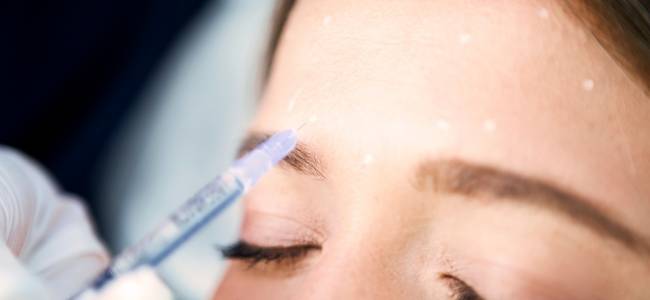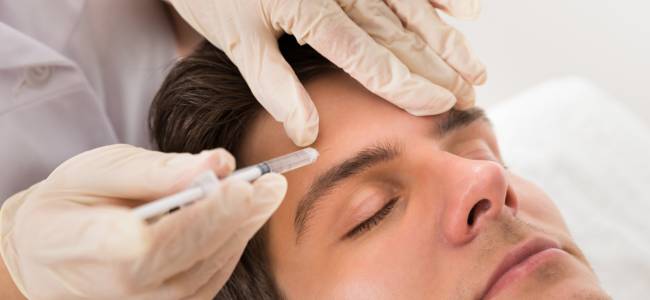From Pain to Relief: How Does Botox Help Migraines?
Migraines can be a debilitating and frustrating experience for those who suffer from them. With the constant search for effective treatments, one option gaining popularity is Botox.
But how does this well-known cosmetic treatment help alleviate migraine pain? In this blog post, we dive into the science behind Botox's ability to block pain signals and reduce muscle tension in migraine sufferers.
We will also explore how Botox is administered as a treatment for migraines, its effectiveness based on clinical studies and patient experiences, and whether insurance coverage may be available.
Key Takeaways
- Botox helps alleviate migraine pain by blocking pain signals from reaching the brain and reducing muscle tension.
- During Botox treatment for migraines, multiple injections are given in specific areas of the head and neck to reduce muscle tension and block pain signals.
- Clinical studies and patient experiences suggest that Botox can provide significant relief for those suffering from chronic migraines. It is important to note that Botox therapy for migraines is a medical treatment that may be covered by insurance.
- While individual results may vary, working closely with a medical professional can help patients understand the optimal frequency and dosage needed for successful management of their chronic migraine headaches with Botox therapy.
How Botox Helps Migraines
Botox helps migraines by blocking pain signals from reaching the brain and reducing muscle tension.
Blocks Pain Signals From Reaching The Brain
One of the primary ways Botulinum toxin, otherwise known as Botox, helps alleviate migraine pain is by blocking pain signals from reaching the brain. This occurs when the botulinum toxin present in Botox injections disrupts the neurotransmitters that carry these pain signals.
For example, imagine you're suffering from a severe migraine, and your head feels like it's being squeezed by an invisible vice grip. When you receive a Botox injection for migraines, the treatment targets specific muscles and nerves linked to headache triggers.
As Botox interferes with neurotransmitter activity responsible for carrying those pesky pain messages, your nerve cells are unable to transmit these signals as efficiently as before.
Reduces Muscle Tension
Botox has been found to help reduce muscle tension, which is a common source of migraine pain. By injecting Botox into specific areas of the head and neck, it can prevent muscle spasms that contribute to headaches.
The injected Botox helps block chemical signals that cause muscles to contract, providing relief for people suffering from frequent migraines. Additionally, reducing muscle tension can also help with other types of headaches caused by tension in the facial muscles or triggered by stress.
Botox Treatment For Migraines
During Botox treatment for migraines, multiple injections are given in specific areas of the head and neck to reduce muscle tension and block pain signals from reaching the brain.
Multiple Injections In Specific Areas Of The Head And Neck
To treat chronic migraines with Botox, doctors typically administer several injections in specific areas of the head and neck. These injections are strategically placed based on each patient's migraine triggers and pain patterns.
Botox therapy for migraines requires a series of injections over time before patients can expect significant improvement. Patients usually undergo at least two treatment cycles before evaluating its effectiveness.
It is important to note that Botox therapy for migraines is not a cosmetic procedure, and it does not change the appearance of the face or neckline.
Frequency Of Treatments
Botox injections for migraines are typically given once every twelve weeks. Patients usually undergo at least two treatment cycles of Botox before evaluating its effectiveness in reducing the frequency and intensity of migraines.
It is important to note that Botox therapy is not a one-time fix; it requires ongoing maintenance to continue providing relief from chronic headaches. Each treatment session may involve multiple injections in specific areas of the head and neck, depending on individual migraine patterns and triggers.
Effectiveness Of Botox For Migraines
Clinical studies and patient experiences have shown that Botox can be an effective treatment for chronic migraines, reducing headache frequency and pain intensity.
Clinical Studies And Patient Experiences
Studies have shown that Botox can be effective in reducing the frequency and severity of migraines. In fact, a study published in the Journal of the American Medical Association found that Botox injections reduced the number of headache days per month for people with chronic migraines by an average of 8 to 9 days.
One patient shared their experience with Botox therapy for migraines, stating that "it has been life-changing." They explained how they went from having multiple debilitating migraine attacks each week to only experiencing occasional mild headaches after undergoing several rounds of treatment.
Conclusion
In conclusion, Botox has shown to be an effective treatment for chronic migraines. By blocking pain signals and reducing muscle tension through specific injections, it can prevent headaches and reduce their frequency.
While the exact mechanism of its effectiveness is not fully understood, clinical studies and patient experiences have demonstrated positive results. It's important to note that Botox therapy for migraines is a medical treatment, not a cosmetic one, and may be covered by insurance.
FAQs:
1. How does botox work to relieve migraines?
Botox injections can help relieve migraines by blocking the release of chemicals that cause pain and inflammation in the body. The injections also relax certain muscles which are thought to be involved in causing migraine headaches.
2. What is the process for getting Botox treatments for migraines?
First, a doctor will evaluate whether you are a good candidate for Botox treatment based on your medical history and symptoms. If you are eligible, they will administer multiple small injections into specific areas of your head and neck at regular intervals.
3. How long does it take for Botox to start working on migraines?
It may take several weeks or even months before you begin noticing significant relief from your migraine symptoms after receiving Botox treatment. However, once the effects have kicked in, many patients report experiencing fewer headaches overall.
4. Are there any side effects associated with using Botox for migraines?
Botox is considered to be very safe and was approved by the food and drug administration as a migraine treatment in 2010. Like any medication or medical procedure, there can be potential side effects associated with using Botox to treat migraines. These may include numbness or tingling around the injection site, as well as temporary muscle weakness or drooping eyelids in some cases. It's important to discuss any concerns about potential side effects with your doctor before undergoing treatment.




